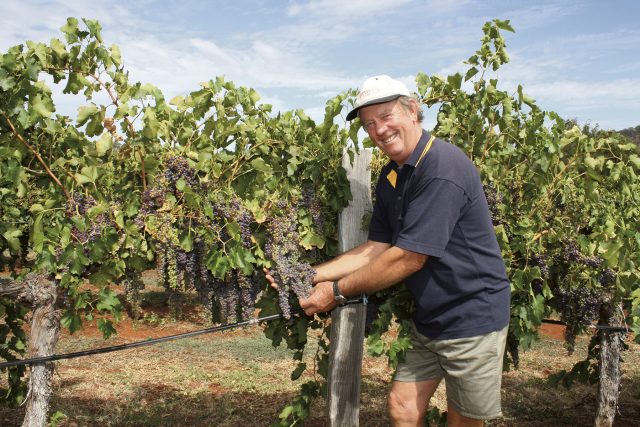Not so long ago the Great Northern Highway was paved with dried fruit drying racks.
There were once hundreds of currant growers in the area until market fluctuation during the 1990s saw the price for dry currants plummet to $600 per tonne. Buyers
for non-contract growers dried up and with the cost to manually harvest a tonne of dried fruit at $900, it is no surprise most pulled out their currant vines.
Today there are only ten commercial currant growers in WA, and almost all of them are in the Northern Valleys. As these growers across the region prepare for harvest it’s good to know they are now rewarded for their tenacity. This year the price for top grade currants is a minimum $2,180/tonne guaranteed.
Longstanding local grower Bruce Wharton and his wife Jenny are optimistic. They have been at their Apricot Acres farm in Bindoon for 22 years, and it now seems that things are
looking good for currant growers in our region.
Bruce moved into Horticulture after 29 years in the electronic engineering profession within the aviation industry. He has been Chair of the Australian Dried Fruits Association for the past eight years. According to David Dewar, a peer currant grower, Bruce has played a key role in ensuring the survival of the local current industry.
Bruce has about 10 acres of currant vines at Apricot Acres. He is soon to harvest these sweet grapes and shared how this is undertaken. Having never tried a currant grape straight off the vine, I ate my way through the interview sampling the delicious sweet ripe offerings feeling privileged to enjoy the grape before it is dried.
Bruce has two main currant varieties; the Zante vines which were planted in 1954 byFrank & Auriel Patterson. The Zante is a high yielder but does have issues such as odium (powdery mildew) and is susceptible to split with summer rains. His best performer is the Carina variety; these vines are about 12 years old and according to Bruce are “a bomb proof variety which isn’t susceptible to mildew and consistent all the way through their cropping.” Bruce was one of the first commercial growers of Carina in WA and now
they are very common.
Harvesting begins in late summer, when the grapes are ripe and ready for picking. There are two main harvesting methods used: traditional hand picking followed by trellis
drying; and mechanical harvesting. Bruce machine harvests his fruit so instead of $900/ dry tonne for picking costs he can harvest for about $300/tonne.
The process involves cutting most fruit bearing canes, while leaving some canes for next years harvest. He manually collects the fruit from the uncut canes and dries them on
the racks. The fruit on the cut canes will then dry on the trellis; the drying completed in about 3 weeks on the trellis and 4 -5 weeks on the racks.
The over the row machine harvest is completed in a day and then 4 days work to pick all the uncut bunches and 4 days work to cut off dead foliage. The currants are sifted on
site, and then sent to the Sunbeam, Mildura factory, before being sent on their way to a supermarket near you.
A quick google of currants confirms what I suspected; currants supply a healthy amount of dietary fibre (both soluble and insoluble), iron, potassium, and B vitamins. It seems these dried grapes are one of the top sources of the trace mineral boron. Studies have shown that boron provides protection against osteoporosis and reproduces many of the positive effects of estrogen therapy in postmenopausal women.
So the tiny, wrinkled currants you’re used to seeing in scones and stuffing are actually very good for you! If you would like to buy direct they will be on sale around mid-March
at Apricot Acres Toy Rd, Bindoon.








